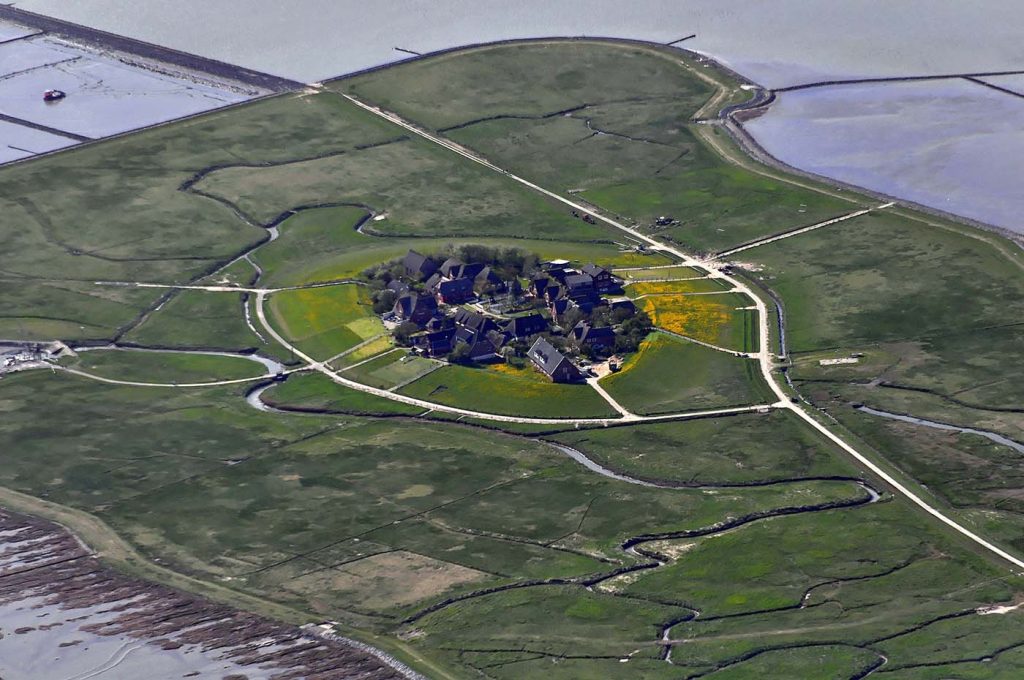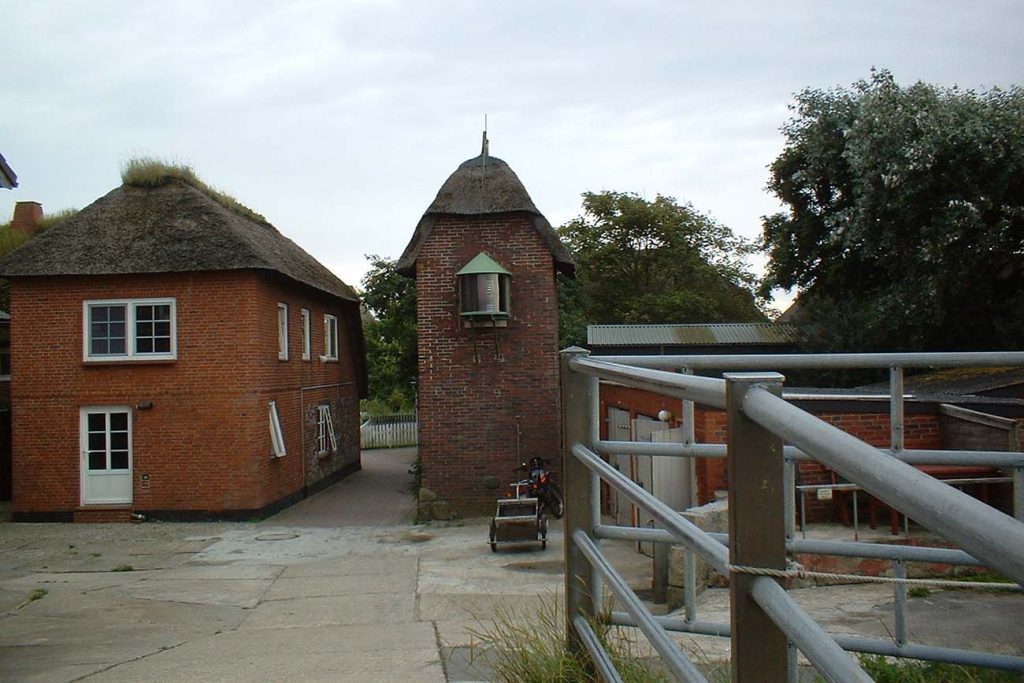Imagine living on an island where extreme flooding is a regular occurrence. For the 16 residents of Oland, a minuscule German island, this isn’t just a possibility—it’s a way of life. But despite the constant challenges posed by Mother Nature, the resilient souls who call Oland home have no plans to abandon their unique haven.
Oland, also known as Øland in Danish and Ualöönist in North Frisian, is a charming hallig nestled among the North Frisian Islands. It’s a place where history and geography intertwine, creating a captivating story of human endurance.

With an unofficial population estimate of just 16 people in 2019, Oland is one of the most remote and sparsely inhabited spots in Germany. But its size doesn’t diminish its allure. Here, you’ll find Germany’s smallest lighthouse, which boasts a distinctive thatched roof that sets it apart from the rest.
The roots of Oland’s human settlement trace back to the Middle Ages. The island was once connected to the neighboring Hallig Langeneß until the Burchardi flood of 1634, which reshaped the landscape. Over centuries, Oland faced the relentless assault of storm surges, leading to its gradual reduction in size. In 1850, a powerful storm flood claimed the island’s second terp (Warft), leaving behind the single, expansive terp we see today, perched in the Wadden Sea.
Since 1927, Oland has been linked to the mainland via a dam fitted with a narrow-gauge railway. Initially, quaint sail-powered lorries graced these tracks, a scene reminiscent of a bygone era. Later, small combustion engines took over, and remarkably, they’re still in use today.
Oland’s story wouldn’t be complete without mentioning its small but crucial harbor. Accessible to vessels with a shallow draft, the harbor welcomes them approximately three hours before and after high tide. During the rest of the time, the access channel is nearly dry, showcasing the island’s ever-changing relationship with the sea.

Now, let’s not forget about the iconic Oland Lighthouse, a mere 7.4 meters (24 feet) tall. This charming brick lighthouse, built in 1929, stands tall as the guardian of the Föhrer Ley and Dagebüll channels. What sets it apart, however, is its thatched roof, a feature unique to this beacon. It’s worth noting that this lighthouse has been faithfully maintained by a dedicated keeper since its inception. Initially lit by liquefied gas, it switched to electricity in 1954. For maintenance purposes, the optic can be conveniently drawn out of the lantern casing on a slide.
The lighthouse’s characteristic light is “fixed,” casting a continuous light with white, red, and green sectors. The red sector guides seafarers northward, while the green sector signals westward. The white light shines broadly, reaching towards the northwest and the town of Wyk on the island of Föhr, where it appears as a welcoming beacon.
So, there you have it—Oland, the tiny island that defies the odds, where a handful of individuals choose to call it home despite its aquatic challenges. It’s a testament to human resilience and the enduring allure of the world’s hidden corners.